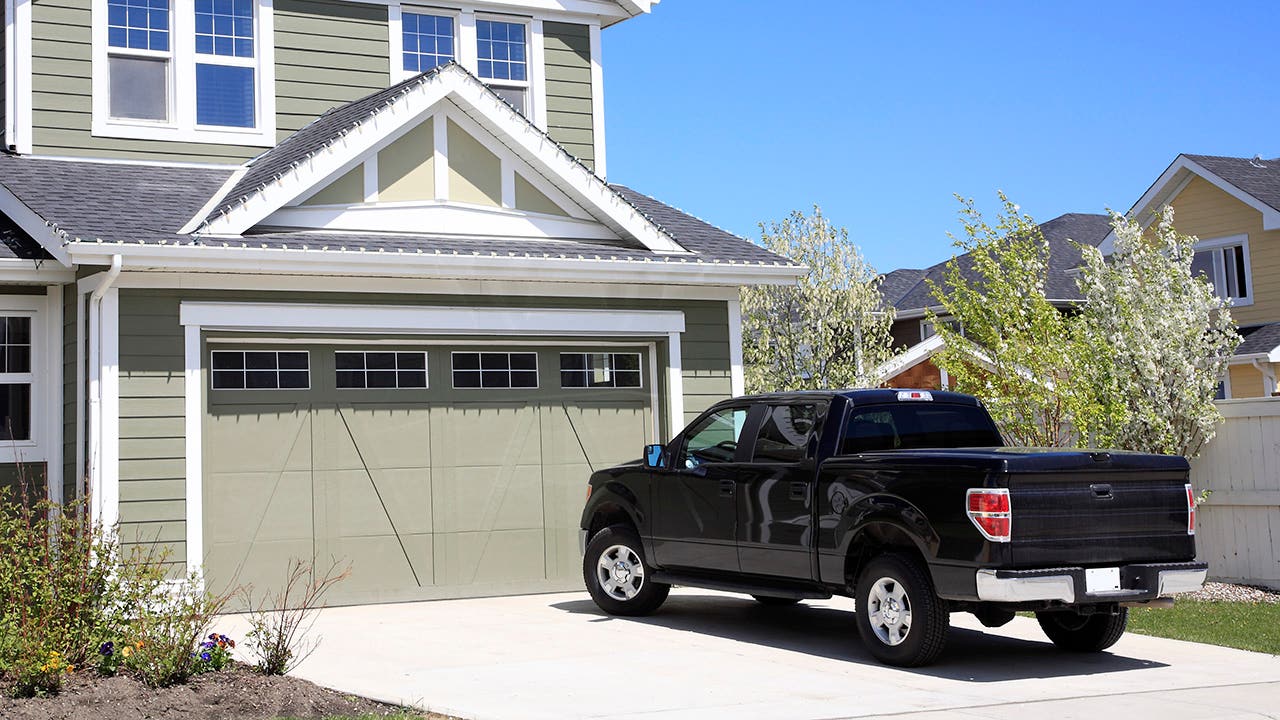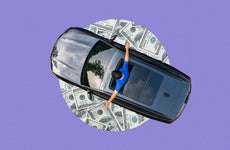The average cost of owning a car

The Bankrate promise
At Bankrate, we strive to help you make smarter financial decisions. To help readers understand how insurance affects their finances, we have licensed insurance professionals on staff who have spent a combined 47 years in the auto, home and life insurance industries. While we adhere to strict , this post may contain references to products from our partners. Here's an explanation of . Our content is backed by Coverage.com, LLC, a licensed entity (NPN: 19966249). For more information, please see our .
For most Americans, owning a car is an important part of modern life. Increasingly, however, it’s becoming a financial burden for many, as the average cost of a car purchased new has risen to more than $40K and gas, in some states, costs four dollars a gallon. But these are only two of the costs associated with owning a car. To find out the true cost of owning and maintaining a car, Bankrate took a close look at all the costs you may encounter when you own a vehicle to help you make the best decision on the car that’s right for you.
How much does it cost to own a car?
To answer the question of how much a car costs altogether, a good place to start is with the actual cost of a vehicle. According to Kelley Blue Book, the average cost of a used car in October 2023 was $26,533, while a new car could be bought for the average price of $48,334. Even with those seemingly high rates, average costs have declined slightly since the end of the pandemic, when supply chain issues and inflation drove prices sky-high. But the sticker price is only the beginning—there are other costs involved in owning a vehicle.
In 2022, the latest year for which statistics are available, AAA estimated that the annual cost of car ownership was $10,728, up from an average of $9,666 the previous year. This is in line with the U.S. Bureau of Labor Statistics’ Consumer Price Index report. This report showed an annual increase from January 2023 to January 2024 of 6.5 percent for motor vehicle maintenance and repair, while the average cost of car insurance increased by more than 20 percent over the same period.
Average monthly cost of owning a car
Based on AAA’s data, the average monthly cost of owning and operating a car is $894. The organization used six categories of cost to determine their average: fuel, maintenance/repair/tire costs, insurance, license/registration/taxes, depreciation and finance charges. They based their numbers on vehicles that were driven for approximately 15,000 miles a year and assumed a five-year ownership period. Your own rate is likely to differ from the average since it is based on factors unique to you, your car and your situation.
Learn more: How to buy a new car in a high-cost environment
Costs associated with car ownership
As we’ve noted above, the costs associated with purchasing and maintaining a car include far more than just fuel costs. All of the following factors play a role in determining what your total cost will be.
-
The average cost of full coverage car insurance in 2024 is $2,545 per year, although your premium may vary based on where you live, the type of vehicle you drive, your driving history, the insurance company you choose and the types and levels of coverage you purchase. Comparing quotes from different carriers and choosing the appropriate amount of coverage for your needs may help you avoid unnecessary expenses. Speaking with an insurance expert may help you maximize your car insurance coverage value.
-
Based on data from Experian, the average monthly loan payment for a new car is $726, while drivers paying on a used vehicle pay an average of $533 monthly. The majority of individuals—79 percent, to be exact—choose to finance their vehicles, but this number is down from 2022 when 82 percent financed their automotive purchases. Based on these numbers, if you are on a limited budget, you may be better off purchasing a good-quality used car to keep loan costs in check.
-
The national average cost of gasoline sits at $3.27 per gallon as of February 23, 2024, according to AAA. Some states are still dealing with far higher prices, though. Hawaii drivers pay the most, with a current average of $4.70 per gallon. Make sure to think about your commute and average weekly mileage when you factor in gas prices; the more you drive, the more you’ll pay at the pump.
-
Registration fees vary from state to state. While some states charge a flat fee for all vehicles, others base the registration cost on the age, horsepower or weight of a vehicle. In states like Oregon, car owners might pay as much as $316 in registration fees. Meanwhile, Alabama residents could pay as little as $23. You can find out how much registering a vehicle in your state will cost by contacting your state’s department of motor vehicles.
-
The average price of routine maintenance for a medium sedan was 10.64 cents per mile in 2022, according to AAA. Your own costs may vary based on your vehicle type, repair costs in your area and how much you drive. Tracking maintenance expenses like oil changes, tire rotations and windshield wiper replacements may help you better budget for these costs. Maintenance and fuel costs combined cost an average of 25 cents.
-
Depreciation isn’t actually a “cost,” but it is something to keep in mind, as your car’s value will decrease as soon as you drive it off the lot. A car’s depreciation varies widely based on its make and model, age, location, mileage and how well it’s taken care of. In 2022, the average annual cost of depreciation for a medium sedan driven 10,000 miles per year was $3,656, according to AAA. Typically, brand-new vehicles lose their value quickly, so buying used and keeping the car in good shape may help lower your car’s depreciation rate.
How to calculate total cost of car ownership
To calculate the total cost of car ownership, begin with the initial cost of the vehicle, and add onto that the amount you will or have paid for interest over the life of your car loan. Include your insurance premiums, fuel costs, registration fees and the amount you spend on regular maintenance, such as oil changes or tire rotation. Determining the exact amount of depreciation is tricky since factors such as the car’s mileage, age, condition and value all play a part in determining your exact depreciation. Kelley Blue Book values can help you come up with a ballpark figure, though. Adding all these factors together can give you a monthly and annual estimate for the total cost of your car ownership.
How to save on car ownership
Although the cost of car ownership can be steep, owners may be able to take steps to keep expenses in check:
- Shop for cheaper car insurance: Insurance companies have different algorithms for calculating insurance rates, so some may offer you cheaper rates than others based on your personal rating factors and coverage needs. Comparing quotes from multiple providers may help you save on your premium.
- Choose your vehicle wisely: The make and model of the vehicle you buy may help you save right off the bat with a lower price tag and down the road with lower insurance, repair and gas costs. You may want to consider your lifestyle, local gas prices, customer reviews, average maintenance costs and average insurance costs when considering a new vehicle.
- Refinance your car loan: Some car loans can be refinanced at a lower rate. It may be wise to check and see if there’s a lower rate available, especially if the market has changed since the vehicle was purchased.
- Consolidate driving trips: The more you drive your car, the more maintenance it will generally require and the more you will spend on gas. It may be a good idea to consolidate errands into one trip, carpool with friends and neighbors and research public transportation options. Driving less might also mean lower car insurance costs, especially if you participate in a telematics program.
- Maintain your car: When it comes to vehicle repair costs, the best defense is a good offense. Having routine maintenance done may help prevent higher repair costs down the road. Early detection of issues can often bring repair costs down.
When is it time to replace a car?
Vehicles don’t last forever, which means at some point you will need to replace yours. Over time, maintenance can become unmanageable or the car might no longer be a good fit for your lifestyle. Here are a few situations to consider when thinking about whether or not it’s time to replace a car.
Family or lifestyle changes
Families may grow with time, and your ideal vehicle may change as your family changes. For example, a larger vehicle may be needed to accommodate car seats. While larger cars have more room and the newer models include advanced safety features, they may get fewer miles per gallon of gas than a smaller vehicle which could mean greater financial responsibility.
Job or lifestyle changes may also necessitate a car replacement. Getting a new job with a longer commute could mean it’s time to invest in a more reliable vehicle with better gas mileage. If you own a small car but fall in love with camping, then you may need to buy an SUV or truck to accommodate your new lifestyle preferences.
Chronic maintenance issues
Once a car has been used for many years, it may require more frequent maintenance. If a vehicle is constantly being taken to the repair shop, it might be time for a new ride. You can even do a bit of math to see if the cost to maintain your current vehicle is outweighing the cost to get a different one.
Although newer car models are typically less likely to break down, they do come with a substantial upfront cost or car payment. Additionally, with advanced safety features and computer systems, average maintenance costs may be more expensive than with an older model.
Poor fuel efficiency
Alternative energy and new technology have dramatically increased the fuel efficiency of modern cars. Those looking for a car that won’t use a lot of gas (or any at all) can find plenty of hybrid and electric vehicles on the market, and they’re becoming more affordable every year.
Although fuel-efficient cars may cost more to buy and maintain, fuel costs could go down or be completely eliminated. Plus, fuel-efficient vehicles may reduce your personal carbon footprint and potentially earn you a discount on your car insurance with some carriers.
Budget changes
If your budget has recently changed, your vehicle might not fit your new needs. For example, perhaps you’ve taken a lower-paying job and are struggling to afford your car payment. Or maybe it’s the opposite: you’re making more money, and you can finally afford your dream car.
You could get greater financial peace of mind when you align your vehicle’s costs with your budget. However, offloading an older car with depreciated value may not get you the full amount to pay off your loan, which could mean your budget has to adjust to meet your new payment needs. On the other hand, if your budget has increased, selling an older vehicle could eliminate some maintenance costs while providing you with a more comfortable and efficient ride.
Drivers should note that states typically charge more to register a newer vehicle and may also charge extra for all-electric models. Additionally, insurers typically charge a higher monthly premium to insure newer or luxury vehicles, as the cost to repair or replace this vehicle in the case of a covered event will likely be higher.
Pros and cons of replacing your vehicle
There are certainly pros and cons to replacing a vehicle, and they may vary by driver. While getting a new car may be exciting, it may also come with additional expenses. Reviewing this list and comparing the pros and cons of a new car in your own life may help you decide if it’s time to purchase a new vehicle.

Pros
- New cars are typically more fuel-efficient.
- A hybrid or electric model could reduce or eliminate fuel costs.
- A different vehicle could better meet your family’s lifestyle and transportation needs.
- Newer vehicles usually require less maintenance and fewer repairs.
- Budget changes could help you buy a more comfortable or efficient vehicle.

Cons
- Buying a new car will likely increase your out-of-pocket costs, even if it reduces maintenance costs.
- It may cost more to register and insure a newer vehicle.
- When maintenance is needed, advanced systems could make repairs more costly.
- Fuel-efficient cars can have higher upfront costs.
- You could incur hefty out-of-pocket costs for the down payment and extended warranty.
Frequently asked questions
-
The cars that have the lowest cost of ownership typically get good gas mileage, have low maintenance costs and are proven to be reliable, based on customer and industry reviews. By doing some research, you should be able to find a car with a low cost of ownership to meet your budgetary needs. Or you can start by considering low-cost models like the Nissan Versa, Mitsubishi Mirage or Kia Forte, as suggested by AAA.
-
To get the best rate on a policy, most insurance experts recommend shopping around to compare rates from various providers. It may be a good idea to research all the car insurance discounts and bundles offered by various insurance companies. Many providers give discounts for things as simple as setting up auto-pay on your policy. Typically, bundling multiple insurance policies, such as auto and home, with one carrier nets you the biggest savings opportunity. Maintaining a clean driving record may also help you save on your car insurance rate as your driving record factors into your rates and indicates how risky of a driver you may be.
-
There are several factors playing a role in the cost of used and new cars. The lingering effects of the supply chain crunch that occurred during the 2020 pandemic have caused delays in manufacturing and contributed to a shortage of car parts. A global semiconductor shortage has limited the production of new cars and driven up their cost. In the used car market, demand has surged due to delayed purchases from 2020 and before. This increased demand, coupled with limited supply, has led to higher prices for used vehicles. Rising prices for raw materials have also contributed to the overall increase in vehicle costs.
-
Vehicle depreciation rates can vary based on factors such as make, model and market demand. On average, new cars depreciate around 20 percent in the first year, primarily due to the initial drop in value when driven off the lot. Over the next few years, annual depreciation typically ranges from 15-20 percent. After about five years, the cumulative depreciation tends to be more gradual. On average, a vehicle may lose about 50 percent or more of its value over the first five years. Keep in mind that these are general estimates, and actual depreciation can vary based on factors like mileage, the vehicle’s condition and market trends. Regular maintenance and care can also influence a vehicle’s resale value.
Related Articles



